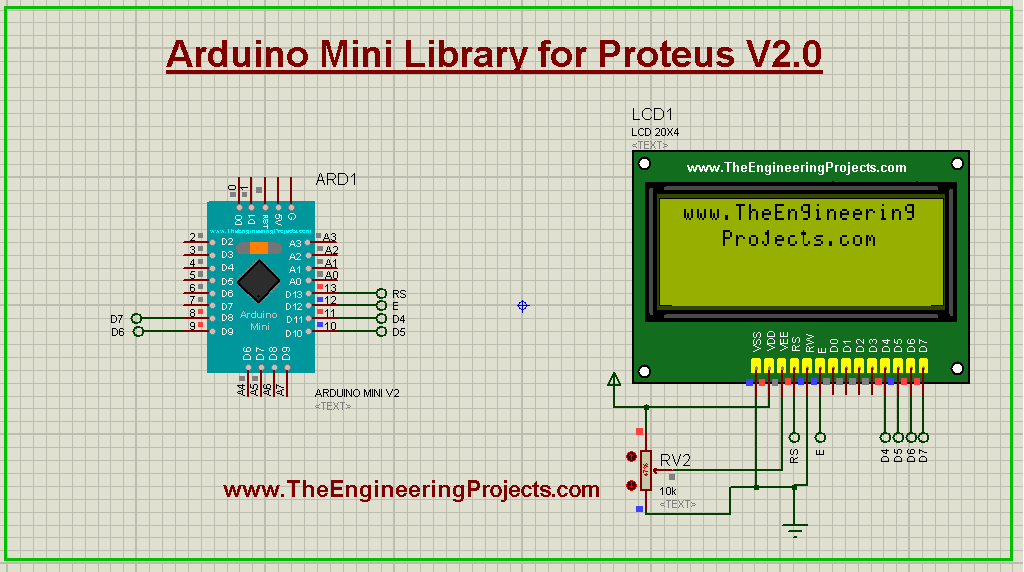
Update: Here's the latest version of this library: Arduino Mini Library for Proteus(V3.0).
Hi Guys! I welcome you on board. Today, I am going to share a new version of Arduino Mini Library for Proteus V2.0. This library is a successor of Arduino Mini Library for Proteus and the new Arduino Mini model is compact, small-sized, efficient, and more powerful.
In the previous post, I shared the Arduino UNO Library for Proteus V2.0, where we have simulated UNO in Proteus. In this tutorial, we will simulate Arduino Mini in Proteus. First, we will download this library and then will use it in our Proteus software to simulate Arduino Mini. Before we read further, let’s have a look at what is Arduino Mini.
What is Arduino Mini?
- Arduino Mini board is a small-sized, robust, application-type & powerful microcontroller board, based on an Atmega328 microcontroller.
- A total of 14 digital I/O pins are incorporated on the board, including 6 PWM pins.
- Moreover, there are 8 analog pins also available on the board.
- This board is quite small compared to Arduino Uno. It is 1/6th of the size of the Uno board.
This was the little intro to Arduino Mini. Now let's start with its Proteus simulation:
Arduino Mini Library for Proteus V2.0
- First of all, download the Arduino Mini library for Proteus V2.0 by clicking the below button:
- You will get the downloaded file in zip format.
- Extract this zip file and open the folder named "Proteus Library Files", inside this folder you will find:
- ArduinoMini2TEP.dll
- ArduinoMini2TEP.idx
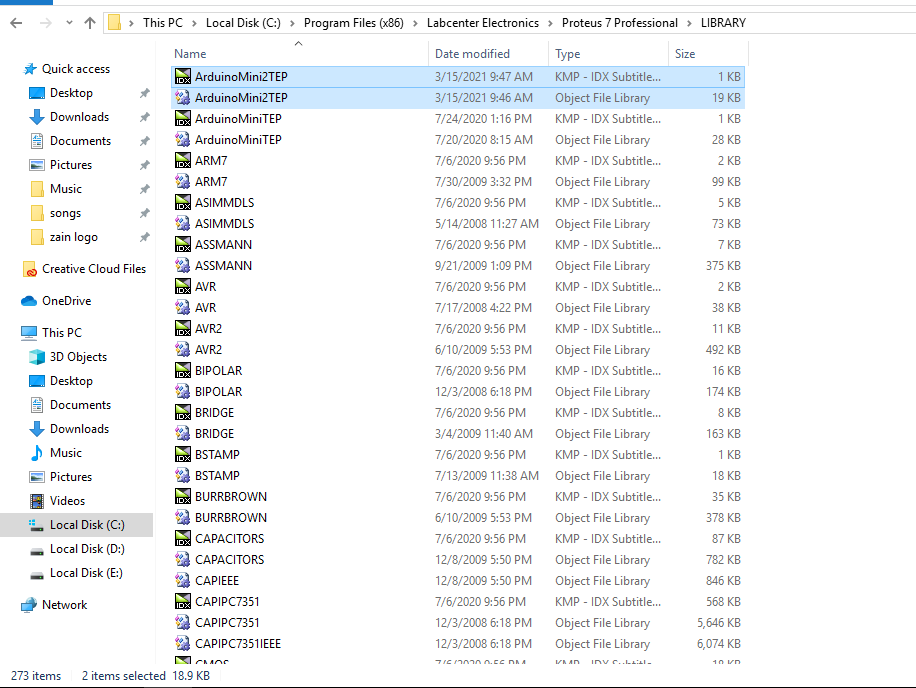
- After adding the library files, open your Proteus software or restart it (if it's already open).
- If you are facing problems with adding a library in Proteus 7 or 8 Professional, then have a look at How to add new Library in Proteus 8 Professional.
- If you haven’t bought your Arduino Mini yet, then you can buy it from this reliable source:
- Now look for the Arduino Mini V2.0 by clicking the “Pick from Libraries” button, as shown in the below figure:
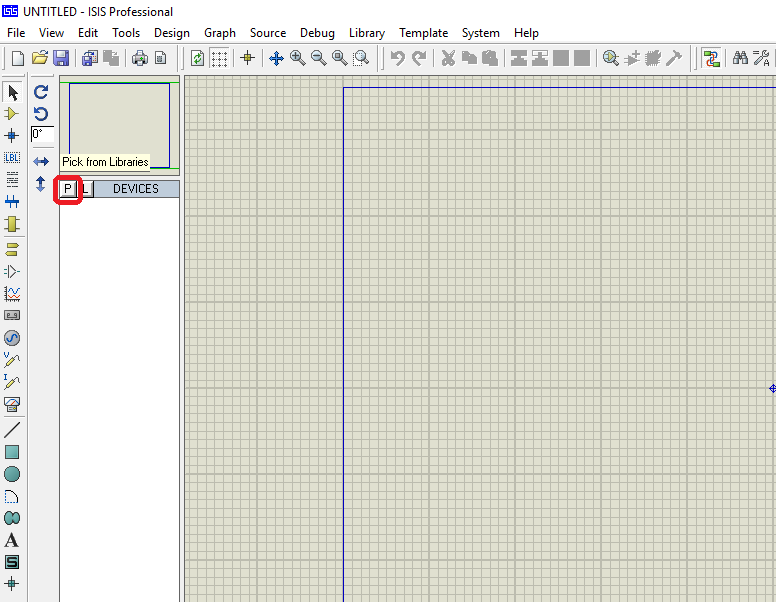
- Select Arduino Mini V2.0 from the list and click OK.
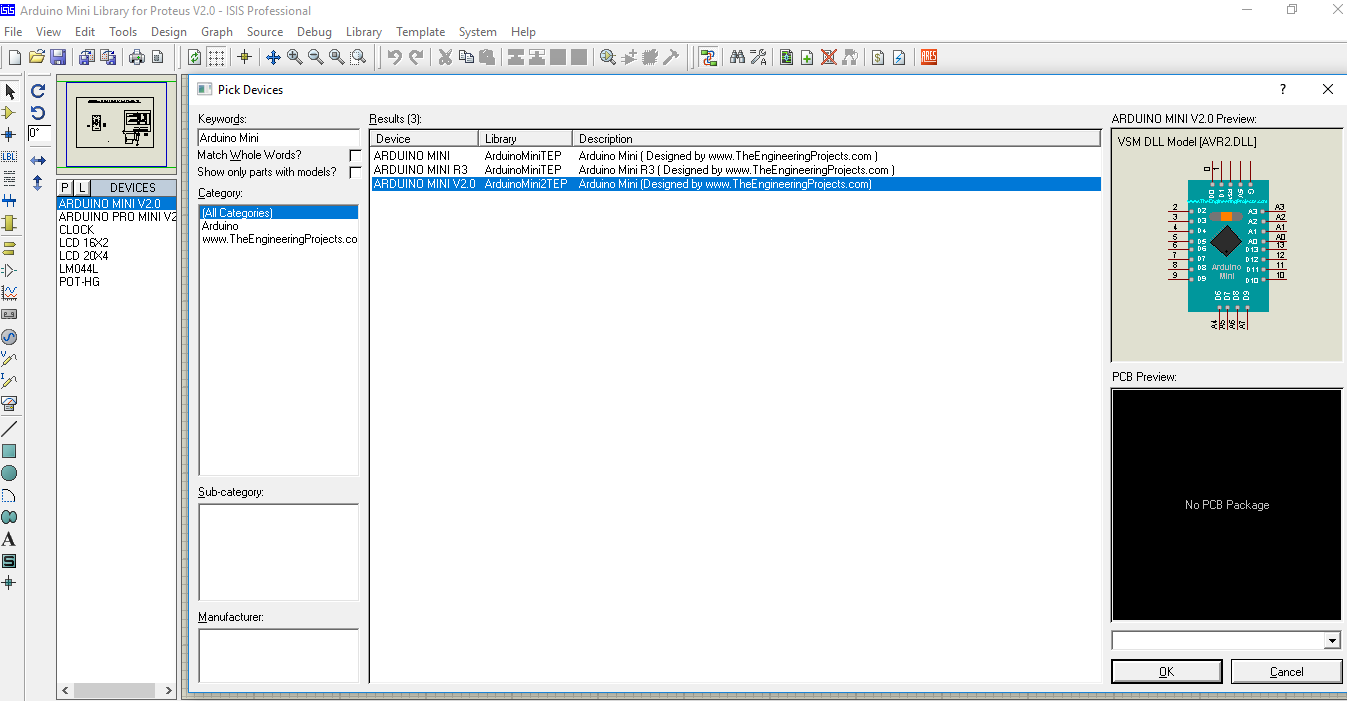
- Place Arduino Mini board in Proteus workspace and it will appear as shown in the below figure:

- You’ve successfully placed the Arduino Mini V2.0 board in the proteus workspace.
- Now, we need to upload the hex file in order to simulate our board.
- To upload the hex file, double click the Arduino Mini board.
- As you double click, it will return the following image.

- In this panel, you can see the different properties of the Mini board.
- We have to click the property named “Program File” to upload the hex file of your Arduino code.
- Click to read how to get a hex file from Arduino software.
- Upload the hex file of your code and click Ok.
- The clock frequency of the Arduino board is 16MHz by default.
Comparison with Old Proteus Library (V2.0 vs V1.0)
- The following figure shows the comparison between version 1 Arduino Mini Board (V1) and version 2 Arduino Mini Board (V2).

- You can see in the above figure, V2 Arduino Mini board is more compact and small-sized as compared to the V1 Arduino Mini board.
Arduino Mini LCD Interfacing
- The Arduino Code and its simulation file have been included in the zip file that you downloaded at the start.
- You can use that simulation but the better way is to design your own simulation that will help you learn better along the process.
- Next, the Arduino Mini Board is interfaced with a 20x4 LCD.
- Design the circuit given below and interface LCD with the Arduino Mini board:
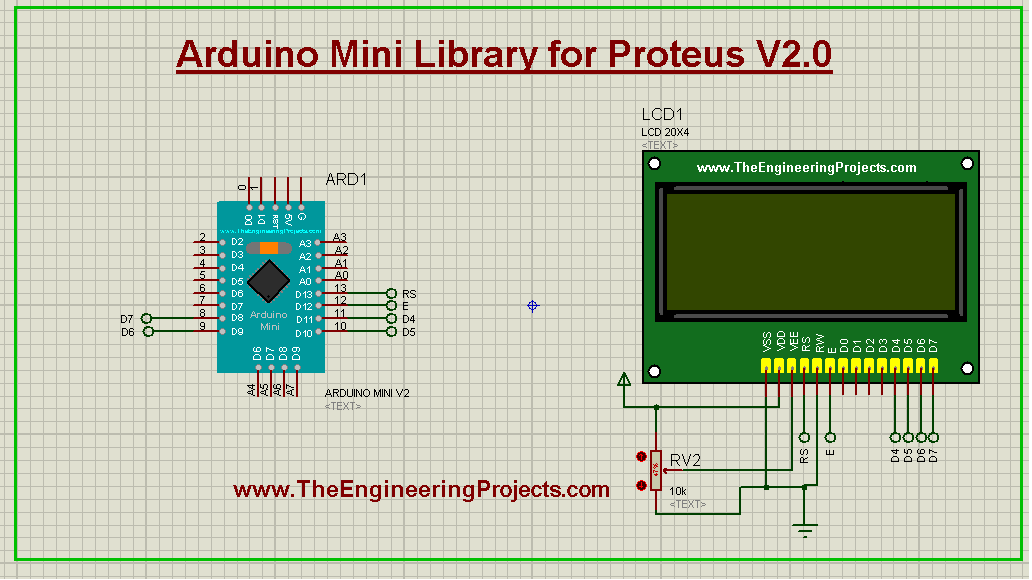
- Data pins of LCD are connected with 8,9,10 & 11 pins of Arduino Mini, while Pin 12 & 13 of Arduino board are connected to Enable & Reset of LCD.
- To upload the code, compile the Arduino code available in the zip format and get the Hex file.
- The Arduino Mini properties panel is used to upload the hex file as we practiced in the previous section.
- You have successfully interfaced LCD with the Arduino Mini board, now press the RUN button to get the result given in the below figure:

Summary
- First, you need to download the Arduino Mini Library Files.
- Next, copy these files from the “Proteus Library Files”(Folder) to the Library folder of Proteus software.
- Now, look for the Arduino Mini in Proteus software.
- Place that Arduino Mini board in the proteus workspace.
- Next, double-click the board that will return the properties panel and upload the HEX File.
- Design your circuit & run the simulation.
That’s all for today. Hope you’ve enjoyed reading this article. If you’re unsure or have any questions, you can approach me in the section below. I’m willing to assist you in the best way I can. Feel free to share your valuable feedback and suggestions about the content we share. They help us create quality content customized to your needs and requirements. Thank you for reading the article.



